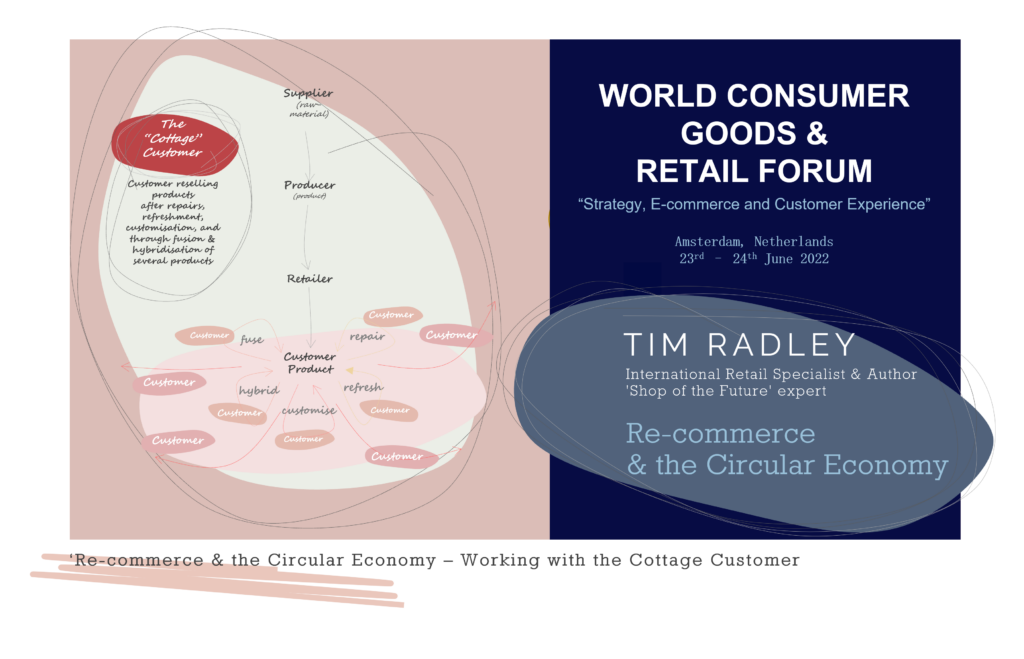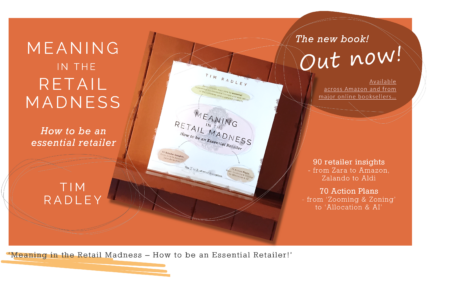
Tim Radley:
“Re-commerce & the Circular Economy”
The World Consumer Goods & Retail Forum 2022
23rd – 24th June 2022
Amsterdam, Netherlands
The re-commerce model, also known as the circular economy, has become an important strategy for many retail verticals, especially as physical retail continues to lose its footing. But it’s not without its challenges.
In this session, Tim Radley will explore how the disruptors are seeing success and the common pitfalls to avoid
Re-productive lifecycles
Product re-production is the new story in town. Innovative retailers, brands and customers are re-working what we think of as production, adding creative value to products and developing a new sustainable landscape for products.
The new initiatives bring together customers, who love their product, and want to continue and evolve its lifecycle beyond the normal timeframe, and retailers who want to increase their length of involvement with the product, after the initial sale to customers. The mutual love of a product forms a deep connection between a retailer and its customers, developing a strong loyalty and advocacy.
For a desirable brand, with a loyal customer base, unique ‘bespoke’ pieces can fetch a retail price far in excess of the original product. The price for the curation of a unique piece, is well worth the investment for retailers and creative customers.

Cottage lifecycles
The recent trend in home creativity, has accelerated rapidly during the COVID lockdown periods. It has given people the time to fully explore everything from home baking, and knitting, to crafts, painting and clothes making. Instead of shopping for new things, instead of being creative with new materials, there has been a surge in re-pairing, re-working and refreshing possessions.
Sites such as Etsy have been tapping into this new product development stream, supporting and promoting individual producers, and cottage industries, helping them show off and sell their wares to a wider audience.
Vintage shops display fusion sweatshirts, gym tops and shorts created from distressed sportswear and popular denim brands. Individual products generating attractive prices, combining quality fabrics with fresh creativity. Vintage branding brought back to the streets. Sustainable processes and extended lifecycles, free marketing, and influencer endorsements.
The culture from decades past, to extend a products lifecycle is being embraced and enjoyed. In this lifecycle within a lifecycle, the loyal customer becomes the producer and the retailer as well as the customer. All for the glory of the brand, the promotion of the product and for sustainability.
‘Working with the Cottage Customer’ is an extract from the book ‘Meaning in the Retail Madness: How to be an Essential Retailer.’ by Tim Radley.
If you would like to read more about the new ways that retailers are working with suppliers, how to develop different kinds of inventory, the importance of a ‘passion supply chain’ and how supply chains should be determined by product role, then you can find all of this and more in ‘Meaning in the Retail Madness.’
Available worldwide across all amazon platforms and popular online booksellers from Waterstones, Blackwell’s & Foyles to Barnes & Noble and The Book Depository.
For more information, click here.
